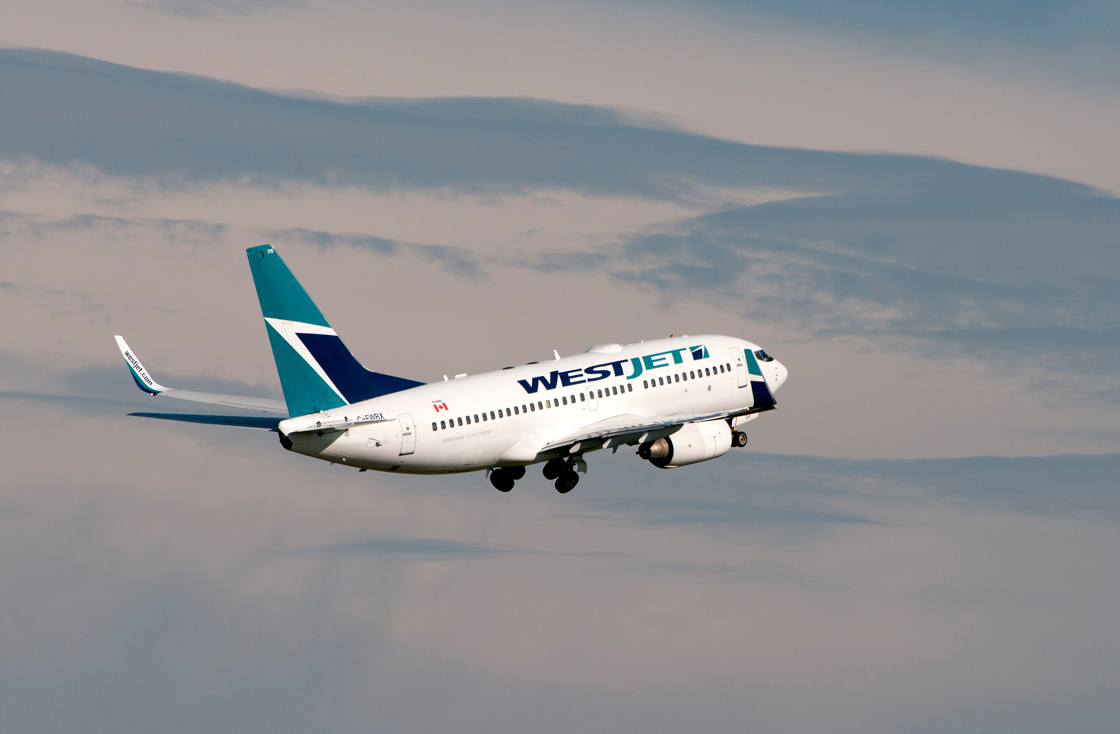When it launched in 1996, WestJet Airlines billed itself as the low-cost alternative to Air Canada.

It still tells us that 18 years later, but as the Calgary-based carrier has grown up, so too have its prices.
Average airfare climbed 4.5 per cent this spring, company execs revealed on Tuesday, while experts say the carrier’s pricing is now generally comparable to its chief rival’s.
And WestJet’s ambitions are only getting bigger.
In June, WestJet made its first transatlantic flight while earlier this month the carrier announced plans to buy more planes that will fly to additional international destinations beginning next year.
The moves layer on new routes to WestJet’s growing footprint, experts say. And it’s adding up.
“Complexity adds costs,” explains David Tyerman, an investment expert at Toronto financial services company Canaccord Genuity.
But WestJet’s plans seem to be creating new opportunities for others.
WATCH: WestJet plane makes ‘unplanned landing’ at Toronto airport
“It opens the door to a new entrant stepping into the market with a traditional low-cost model,” Ben Cherniavsky, analyst at Raymond James, said.
Indeed, two firms – named Jet Naked and Jetlines, respectively — are reportedly looking to fill the void by launching ultra-low-cost air services offering travellers no-frills flying between domestic and perhaps U.S.-based destinations.
- Train goes up in flames while rolling through London, Ont. Here’s what we know
- Budget 2024 failed to spark ‘political reboot’ for Liberals, polling suggests
- Wrong remains sent to ‘exhausted’ Canadian family after death on Cuba vacation
- Peel police chief met Sri Lankan officer a court says ‘participated’ in torture
“We hear rumours that there are other Canadian airlines who want to get in on this space,” Gregg Saretsky, chief executive of WestJet, noted on Tuesday’s conference call.
Big discounts
Cherniavsky said such services could initially sell tickets for half what WestJet and Air Canada sell the same flights for.
“Indeed, real low-cost/low-fare carriers usually cut existing fares by 40-50 per cent – or more! – in order to stimulate demand,” the Raymond James analyst said in a July 25 note to clients.
Recent flights between Vancouver and Los Angeles offered by Air Canada’s discount service, called Rouge, were about $100, the analyst noted.
If successful in raising the necessary funds to get service off the ground — a big if — both low-cost services would likely rely on “unbundling” the different costs that are typically rolled up into a ticket’s price, experts say.
“They’d basically say, ‘the seat costs this. If you want a drink, it costs this; a space in the overhead costs that; a bag in the hold costs that.’ There would be a menu of upgrades” that would come with an individual price tag, Canaccord’s Tyerman said. “It’s basically unbundling anything and everything.”
Flying just a few routes that aren’t dependent on connecting flights is another means of lowering the ticket price, experts say — simple point-to-point flights on a handful of destinations.
Southwest joining fray?
U.S. carrier Southwest Airlines Co. could also be eyeing new routes to and from Canada, the so-called discount carrier said last week.
Gary Kelly, Southwest’s CEO said Canadian destinations, among others, “look at least sufficiently attractive when it comes to the traffic potential.”
That could spell better pricing on U.S.-bound flights, experts note, though higher airfare taxes and other fees in Canada could make Southwest less anxious to land here than other target destinations on its list.
WestJet ‘set up’ to match
Still, WestJet said Tuesday it would respond to whatever new lower-cost competitors could throw at it.


Comments